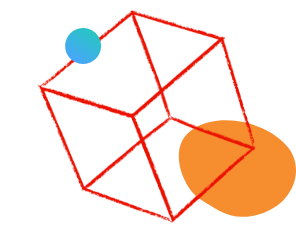This conversation has been locked due to inactivity. Please create a new post.



This conversation has been locked due to inactivity. Please create a new post.
Hi,
When I create 3 tables to check bounce rate, I can see slight differences.
Table 1:
Dimension: Entry Page
Metric: Entries, Bounces, Bounce Rate
Table 2:
Dimension: Page
Metric: Entries, Bounces, Bounce Rate
Table 3:
Dimension: Page (eVar)
Metric: Entries, Bounces, Bounce Rate
According to the definition, Bounce Rate = Bounces / Entries, Entry page is the first page of a visit.
So, it seems break down by Entry Page (Table 1) shall be the most close to 100% correct.
Is this correct?
Thank you.
H
Solved! Go to Solution.
Views
Replies
Total Likes

Ah yeah, my mistake in not reading your reply properly to see that you had said it's a prop.
The only thing I can think of to explain the differences is that the Page Type (prop) is not set with some hits.
Given that Page x Entries and Entry Page x Entries always give the same results, try breaking downPage Type (prop) by Page, i.e. Page Type (prop) x Page x Entries and Entry Page Type (prop) x Page x Entries. Do you then notice any Pages in the second table that are missing from the first table?
If you don't see any differences and there are Custom / Download / Exit Links in your pages, try breaking down by Custom / Download / Exit Links, on the off chance that these Link hits were firing before your Page hits.

Tables 1 and 2 give you the exact same result.
So you're really comparing Table (1 or 2) vs Table 3. Between those 2 choices, I'd choose Table (1 or 2). The eVar introduces an unknown complication (e.g. depends on how it's set, what is its allocation/expiration, etc), so I wouldn't use Table 3 if I could.
Views
Replies
Total Likes
@yuhuisgIn fact, we are trying to create segments to different page types to see different user behavior entry from specific search engines.
So, I think we should use something dimension like: Entry Page Type = Type 1, Entry Page Type = Type 2, etc, But not "Page Type = Type 1 AND Entries exists".
Is this correct?
By the way, here is a screen capture, when we try to use Page Type (prop) and Entry Page Type (prop), there are slightly different on the Entries and Bounces. (So in OP I asked, theoretically, Table 1 and 2 which is the right one).
Could you please share any idea why?
Thank you for your reply.
H
Views
Replies
Total Likes

Before I answer your question about the segment…
In your screenshot, you're using "Page Type". Is this an eVar? If so, then those are really Table 3 tables.
In my original answer, I was referring to the built-in "Page" and "Entry Page" dimensions when talking about Tables 1 and 2.
Views
Replies
Total Likes
Hi, as mentioned in the reply, they are all prop, not evar. Thanks.
Views
Replies
Total Likes

Ah yeah, my mistake in not reading your reply properly to see that you had said it's a prop.
The only thing I can think of to explain the differences is that the Page Type (prop) is not set with some hits.
Given that Page x Entries and Entry Page x Entries always give the same results, try breaking downPage Type (prop) by Page, i.e. Page Type (prop) x Page x Entries and Entry Page Type (prop) x Page x Entries. Do you then notice any Pages in the second table that are missing from the first table?
If you don't see any differences and there are Custom / Download / Exit Links in your pages, try breaking down by Custom / Download / Exit Links, on the off chance that these Link hits were firing before your Page hits.
Thanks for the reply, so...as in OP said, IMO the most close to the definition is to use Table 1: "Entry Page" for entries, bounces, instead of Table 2 incase of the configure issues...
😋
Views
Replies
Total Likes